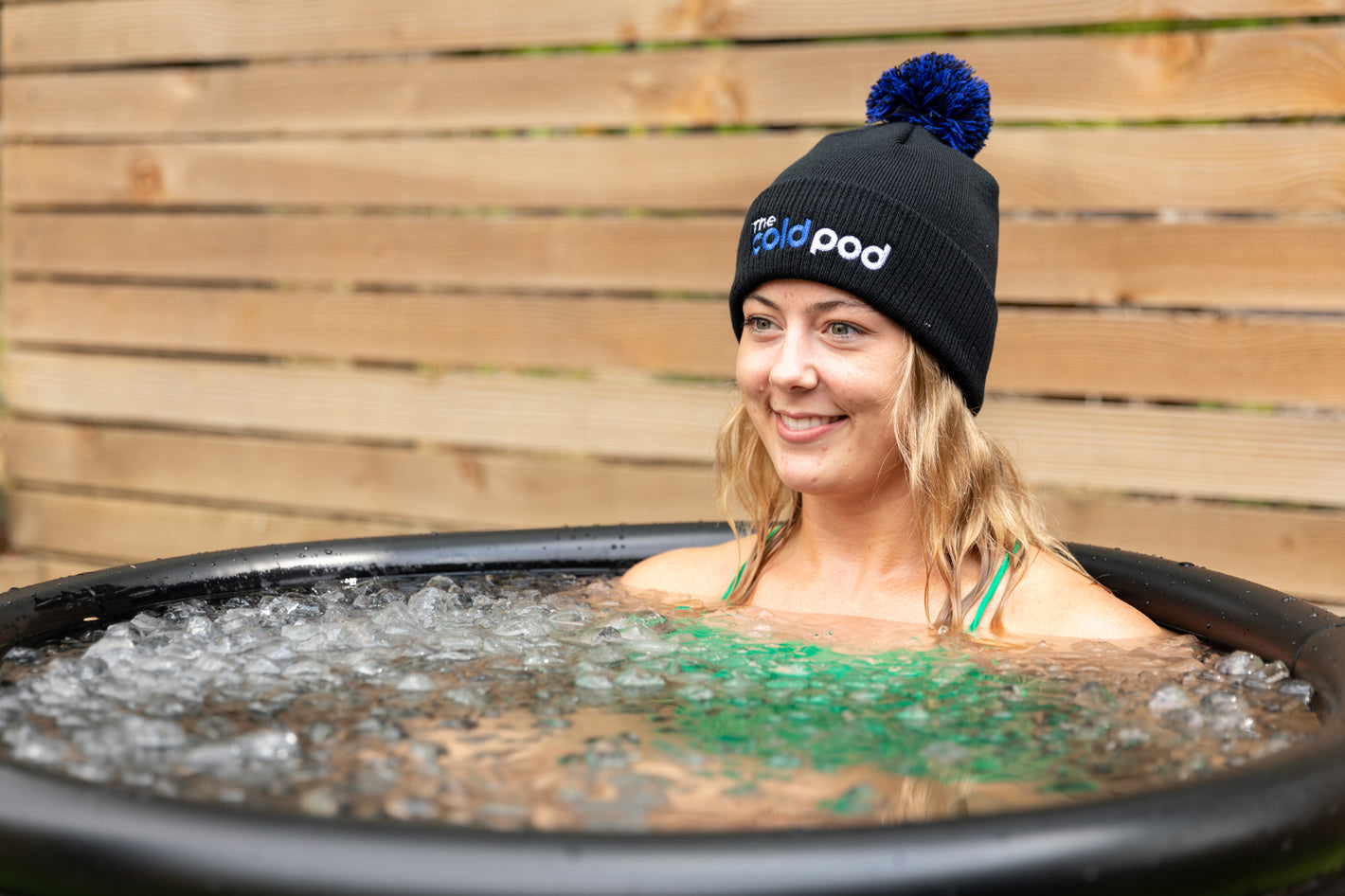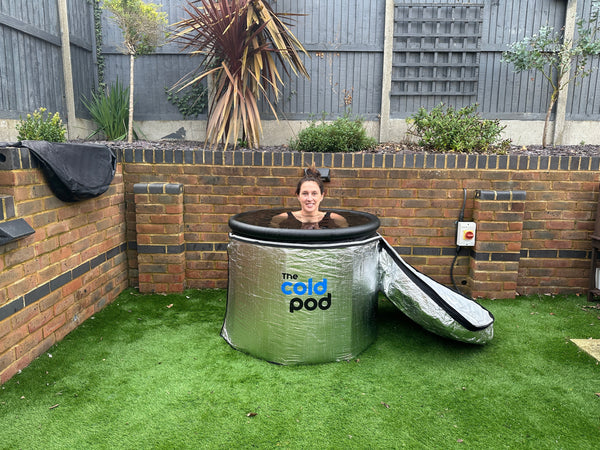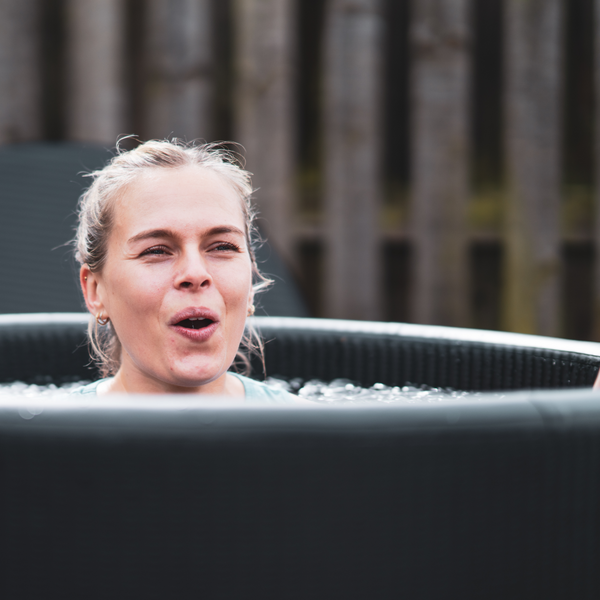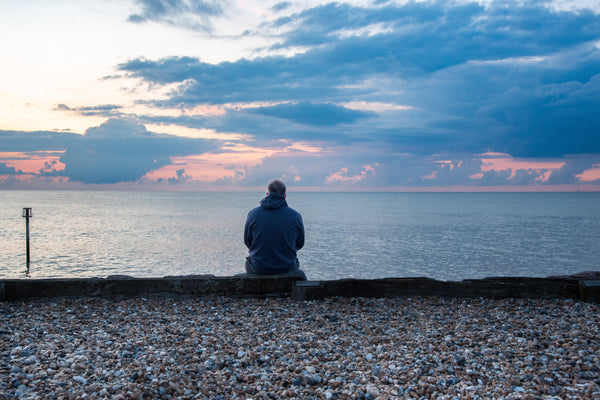As the New Year dawns upon us, it brings with it the promise of fresh beginnings and a renewed commitment to self-improvement. Many of us embark on our annual journey of setting resolutions and goals, determined to better ourselves in various ways, whether it’s getting fit, achieving career milestones, or enhancing our overall well-being. Yet, amidst the excitement and optimism, we often find ourselves facing challenges and doubts along the way.
Enter the unconventional ally in this quest for self-improvement: ice baths. The idea of immersing oneself in icy-cold water may seem counterintuitive, perhaps even daunting, but the concept of cold exposure has gained popularity for its remarkable potential to boost confidence, resilience, and overall personal growth.
In this blog, we will explore the intriguing relationship between cold exposure and self-confidence, delving into the science behind it, the historical roots of ice baths, and the practical steps to incorporate this practice into your New Year’s journey. By the time you finish reading, you’ll have a deeper understanding of how “Cold Confidence” can be the unexpected catalyst for a transformative year ahead. So, let’s take a plunge into the icy depths and discover the untapped potential that lies within the chill of ice baths.
The Science Behind Cold Exposure
Before we delve into the practical aspects of incorporating ice baths into your New Year’s journey, it’s crucial to understand the science behind cold exposure and why subjecting your body to icy-cold water can have such a profound impact on your confidence and overall well-being.
1. Physiological Effects:
When you immerse your body in cold water, a cascade of physiological responses is triggered. The first and most immediate reaction is vasoconstriction – the narrowing of blood vessels to conserve heat and maintain core body temperature. This causes blood to flow away from the extremities towards your vital organs, temporarily reducing blood circulation in your limbs.
As your body adapts to the cold, it activates mechanisms to generate heat, such as shivering. This process, known as thermogenesis, not only helps maintain your core temperature but also burns calories in the process. Additionally, the cold exposure stimulates the release of endorphins, natural feel-good hormones, leading to an improved mood and a sense of euphoria.
2. Enhancing Mental Resilience:
Cold exposure is not just about physical sensations; it’s also a powerful mental challenge. Stepping into an ice bath requires focus, determination, and the ability to push past discomfort. This mental fortitude can translate into increased self-confidence and a belief in your ability to overcome obstacles in other areas of your life.
Moreover, the controlled stress of cold exposure can stimulate the production of stress-related hormones like cortisol. In the right doses, these hormones can help you become more resilient to stress in your daily life. Over time, you may find yourself better equipped to handle difficult situations and setbacks, bolstering your confidence in your abilities.
3. Overall Health Benefits:
Beyond the immediate effects, regular cold exposure has been associated with numerous health benefits. It can improve circulation, boost the immune system, and even support weight loss by activating brown fat, which burns energy to generate heat. Some studies suggest that cold exposure may help reduce inflammation and alleviate symptoms of certain chronic conditions.
In summary, the science behind cold exposure reveals a fascinating interplay of physiological responses and mental challenges that can lead to improved physical and mental well-being. It’s not merely about enduring the cold; it’s about harnessing its transformative power to boost your confidence and resilience in your New Year’s journey.
In the next section, we’ll explore the historical roots of ice baths and how they have evolved over time. Understanding their cultural significance can provide context for their modern-day application.
Ice Baths: A Brief History
The practice of immersing oneself in icy-cold water, commonly known as an ice bath or cold-water immersion, may seem like a contemporary health trend, but its roots can be traced back through the annals of history. Understanding the historical context and cultural significance of ice baths sheds light on their enduring appeal and relevance in our modern pursuit of self-improvement.
Ancient Beginnings:
The concept of using cold water for therapeutic purposes dates back thousands of years. In ancient civilisations such as Egypt, Greece, and Rome, cold water baths were employed not only for physical rejuvenation but also for spiritual purification. These early cultures believed that immersing oneself in cold water could cleanse the body and purify the soul.
Nordic Traditions:
The Scandinavian region, with its frigid climate, has a long-standing tradition of cold water immersion. Saunas, followed by a plunge into icy lakes or streams, have been an integral part of Nordic culture for centuries. This practice, often referred to as “avantouinti” or “avanto,” is believed to promote mental clarity, resilience, and vitality.
Japanese Onsen:
In Japan, the centuries-old tradition of soaking in hot springs, known as “onsen,” includes the practice of alternating between hot and cold baths. This contrast bathing is thought to have numerous health benefits, including improved circulation, stress reduction, and relief from muscle soreness.
Modern Evolution:
In the modern era, cold water immersion gained popularity in sports and athletic training. Athletes and coaches began to recognise its potential for reducing inflammation, speeding up recovery, and enhancing performance. Today, ice baths are a common sight in professional sports facilities and gyms around the world.
The Wim Hof Method:
In recent years, the Dutch extreme athlete Wim Hof, often referred to as the “Iceman,” has brought the benefits of cold exposure to the forefront. Hof’s method, which combines cold exposure, controlled breathing, and meditation, has garnered a following of enthusiasts who swear by its transformative effects on both body and mind.
As we can see, the concept of cold-water immersion is far from new; it has been woven into the fabric of various cultures and societies throughout history. This rich heritage underscores the enduring appeal of ice baths and their potential to enhance our New Year’s journey of self-improvement.
In the next section, we’ll explore how the practice of taking ice baths has evolved over time and the various methods and approaches that have emerged. Whether you’re a seasoned cold exposure enthusiast or a newcomer intrigued by the idea, there’s much to learn about how to make the most of this age-old practice in the modern world.
Cold Confidence: How It Works
Ice baths are not just about enduring the cold; they are a powerful tool for cultivating mental and emotional resilience, ultimately leading to increased self-confidence. Let’s explore how this process unfolds and why stepping into an ice bath can be a transformative experience for your New Year’s journey.
1. Mental Toughness:
Facing the icy-cold water requires a mental shift. It’s a deliberate decision to embrace discomfort and uncertainty. This act of willingly entering a challenging situation can be seen as a metaphor for taking on life’s challenges with a fearless attitude. Over time, as you continue to expose yourself to cold water, you build mental toughness – the ability to push through adversity, stay focused, and maintain composure even when faced with discomfort.
2. Overcoming Fear and Doubt:
Many people approach their first ice bath with trepidation, unsure if they can endure the cold. The act of stepping in and staying submerged allows you to confront and conquer fear and doubt. As you repeatedly expose yourself to this controlled stress, you develop a sense of self-assuredness, knowing that you can overcome obstacles and uncertainties in your life, just as you conquered the cold.
3. Mind-Body Connection:
Cold exposure forces you to be present in the moment. When you’re in the ice bath, there’s no room for distraction or procrastination. This heightened state of awareness can lead to a stronger mind-body connection, enabling you to better understand and control your reactions to various situations in your life. You become more attuned to your body’s signals, helping you make informed decisions and respond effectively to stressors.
4. Emotional Resilience:
Ice baths also play a role in emotional resilience. The process of willingly subjecting yourself to discomfort and mastering your emotional response can lead to increased emotional strength. You become less reactive to stress, better able to manage your emotions, and more capable of maintaining a positive mindset even in challenging circumstances.
5. Confidence Boost:
All these elements combined result in a significant boost in self-confidence. When you’ve faced the icy-cold water and emerged stronger on the other side, you carry that sense of achievement with you. It becomes a reminder that you have the inner strength and resilience to overcome whatever obstacles may come your way in your New Year’s journey.
Incorporating cold exposure into your routine, whether through ice baths, cold showers, or other methods, can be a powerful way to build the mental and emotional fortitude necessary for success and personal growth. In the next section, we’ll discuss how you can practically incorporate ice baths into your New Year’s journey and reap the benefits of “Cold Confidence.”
Incorporating Ice Baths into Your New Year’s Journey
Now that we’ve explored the science and psychology behind ice baths and their potential to boost confidence, it’s time to dive into the practical aspects of integrating this practice into your New Year’s journey of self-improvement. Here are some actionable steps to help you get started:
1. Start Slowly:
If you’re new to cold exposure, it’s essential to ease into it gradually. Begin with shorter exposure times, like a cold shower at the end of your regular shower routine. Over time, you can progressively extend the duration of your cold exposure sessions. This gradual approach will help your body adapt to the cold and reduce the shock to your system.
2. Set a Schedule:
Consistency is key when it comes to ice baths. Set a regular schedule for your cold exposure sessions. Whether it’s daily, a few times a week, or as part of your weekend routine, having a set schedule will make it easier to incorporate ice baths into your life.
3. Find Your Comfort Zone:
Experiment with different cold exposure methods to find what works best for you. Some people prefer ice baths, while others may find cold showers or plunges in natural bodies of water more accessible. The goal is to challenge yourself without overwhelming your system. Why not try one of our Cold Pods?
4. Create a Relaxing Environment:
Make your cold exposure experience as comfortable as possible. Ensure the room or space where you plan to take an ice bath is warm and free from drafts. Prepare towels, warm clothing, and a hot beverage for after your session to help you warm up and relax.
5. Breathing and Mindfulness:
Practice controlled breathing and mindfulness during your cold exposure. Deep, slow breaths can help you stay calm and reduce the initial shock of the cold. Focus your mind on the experience, and remind yourself of the mental and emotional benefits you’re gaining with each session.
6. Track Your Progress:
Keep a journal to record your cold exposure experiences. Note the duration, temperature, and how you felt before and after each session. Tracking your progress can help you see improvements in your tolerance and mental resilience over time.
7. Listen to Your Body:
Pay close attention to your body’s signals during cold exposure. If you ever feel excessively uncomfortable or experience any unusual sensations, it’s crucial to stop and warm up immediately. Cold exposure should challenge you but never jeopardise your health.
8. Seek Guidance if Needed:
If you have any underlying health conditions or concerns about incorporating ice baths into your routine, consult with a healthcare professional before starting. They can provide guidance tailored to your individual needs and circumstances.
Incorporating ice baths into your New Year’s journey can be a rewarding and empowering experience. As you build mental and emotional resilience through cold exposure, you’ll find yourself better equipped to tackle your resolutions and face life’s challenges with renewed confidence and determination.
In the next section, we’ll address common concerns and offer solutions for overcoming challenges that may arise as you embark on your journey of “Cold Confidence.”
Overcoming Common Challenges
While the benefits of cold exposure are compelling, it’s natural to encounter challenges along the way. Here, we’ll address some common concerns and provide solutions to help you overcome these obstacles as you incorporate ice baths into your New Year’s journey:
1. The Initial Discomfort:
Challenge: The shock of cold water can be intimidating, making it difficult to take the plunge initially.
Solution: Start with shorter exposure times and gradually increase them as you become more comfortable. Focus on controlled breathing to calm your nerves and reduce the initial discomfort.
2. Fear of the Unknown:
Challenge: Fear and apprehension are common before trying something new, especially if you’ve never experienced ice baths.
Solution: Educate yourself about the benefits and science behind cold exposure. Understanding the “why” can help alleviate fear and motivate you to give it a try. Additionally, consider joining a supportive community or finding a mentor who can guide you through the process.
3. Cold Tolerance:
Challenge: Your cold tolerance may vary depending on various factors, including your physical condition and environment.
Solution: Be patient with yourself and remember that everyone’s tolerance is different. The goal is to push your boundaries gently over time. Gradual exposure will help your body adapt and increase your tolerance.
4. Managing Discomfort:
Challenge: Dealing with the discomfort of cold exposure can be mentally challenging.
Solution: Use mindfulness techniques to stay present during your sessions. Remind yourself of the long-term benefits and how each session contributes to your personal growth. You can also incorporate meditation practices to help calm your mind and manage discomfort.
5. Consistency:
Challenge: Maintaining a regular cold exposure routine can be challenging amidst a busy schedule.
Solution: Schedule your ice bath sessions at convenient times. It could be early morning, before bedtime, or during the weekend. By setting a consistent schedule, you’ll be more likely to stick with your practice.
6. Safety Concerns:
Challenge: Safety should always be a priority when it comes to cold exposure.
Solution: Learn about the potential risks and safety measures associated with ice baths. Never push yourself to the point of discomfort or danger. If you have any medical conditions or concerns, consult a healthcare professional before starting.
7. Support and Accountability:
Challenge: Staying motivated and accountable can be challenging when trying something new.
Solution: Find a like-minded community or accountability partner to share your journey with. Social support can be incredibly motivating and make the experience more enjoyable.
Remember that overcoming challenges is an integral part of personal growth. Cold exposure provides an opportunity to face discomfort head-on, and in doing so, you’ll develop valuable life skills, such as resilience and determination.
Safety Precautions and Health Considerations
While cold exposure can offer numerous benefits for physical and mental well-being, it’s essential to prioritise safety and consider potential health implications when incorporating ice baths into your routine. Here are some important safety precautions and health considerations to keep in mind:
1. Consult a Healthcare Professional:
Consideration: Before starting any cold exposure regimen, especially if you have underlying health conditions, it’s advisable to consult with a healthcare professional. They can assess your individual health status and provide guidance tailored to your needs.
2. Know Your Limits:
Precaution: It’s essential to understand your personal limitations and never push yourself too far when engaging in cold exposure. Listen to your body and be aware of signs of distress, such as severe shivering, numbness, or dizziness. If you experience any of these symptoms, exit the cold immediately and warm up.
3. Gradual Progression:
Precaution: Avoid diving into prolonged ice baths or extremely cold water right from the start. Begin with shorter exposure times and progressively extend them as your body adapts. Rapid or extreme cold exposure can be dangerous and counterproductive.
4. Cold Water Temperature:
Precaution: Pay attention to the temperature of the cold water. Extremely cold water can pose risks, such as hypothermia or frostbite. Aim for water temperatures that challenge you but remain within a safe range. Many experts recommend water temperatures between 10°C to 15°C (50°F to 59°F) for ice baths.
5. Cold Water Immersion Techniques:
Precaution: Understand and use safe cold water immersion techniques. For example, avoid fully submerging your head in icy water, as this can increase the risk of hypothermia and disorientation. Keep your head above the waterline and ensure your face remains dry.
6. Time Limits:
Precaution: Limit your cold exposure sessions to a reasonable duration, typically ranging from 2 to 10 minutes, depending on your experience and comfort level. Prolonged exposure beyond your tolerance can be harmful.
7. Pre-existing Medical Conditions:
Consideration: If you have medical conditions such as cardiovascular issues, respiratory disorders, or Raynaud’s disease, consult your healthcare provider before attempting cold exposure. Certain medical conditions may require modified or supervised practices.
8. Medications:
Consideration: Be aware of any medications you are taking and how they may interact with cold exposure. Some medications can affect your body’s response to cold, so it’s essential to discuss this with your healthcare provider.
9. Pre-warming and Post-warming:
Precaution: To minimise the shock to your system, pre-warm your body by engaging in light physical activity or taking a warm shower before an ice bath. After your session, warm up gradually with dry, warm clothing and a hot beverage to prevent a sudden drop in body temperature.
10. Pregnancy and Specific Groups:
Consideration: Pregnant individuals and certain groups, such as children, the elderly, and those with compromised immune systems, may need to exercise extra caution or avoid cold exposure altogether. Consult with a healthcare professional to determine suitability.
By following these safety precautions and considering your individual health factors, you can enjoy the benefits of cold exposure while minimising potential risks. Safety should always be the top priority as you embark on your journey of “Cold Confidence.”
Conclusion
In the quest for self-improvement that accompanies the start of a new year, we often seek innovative approaches to boost our confidence, resilience, and overall well-being. Ice baths, with their long history, intriguing science, and transformative potential, offer a unique and unconventional path towards achieving these goals.
As you embrace “Cold Confidence” and navigate the challenges, remember that the true value lies not only in enduring the cold but in the growth and self-discovery that it fosters. By overcoming discomfort, confronting fear, and building resilience through cold exposure, you’re equipping yourself with invaluable tools for success in your New Year’s resolutions and beyond.
So, whether you’re a seasoned cold exposure enthusiast or someone curious about the practice, consider taking the plunge into the world of ice baths. Embrace the chill, harness the transformative power of “Cold Confidence,” and embark on your New Year’s journey with renewed vigour, resilience, and self-assuredness. The icy depths hold the promise of a stronger, more confident you, ready to conquer the challenges that lie ahead.
Here’s to a year of self-improvement, resilience, and embracing the unexpected. Happy New Year, and may your journey be as invigorating as a dip in icy waters!
Why not keep us up to date with your cold dipping journey over on The Cold Pod Community Facebook group.







